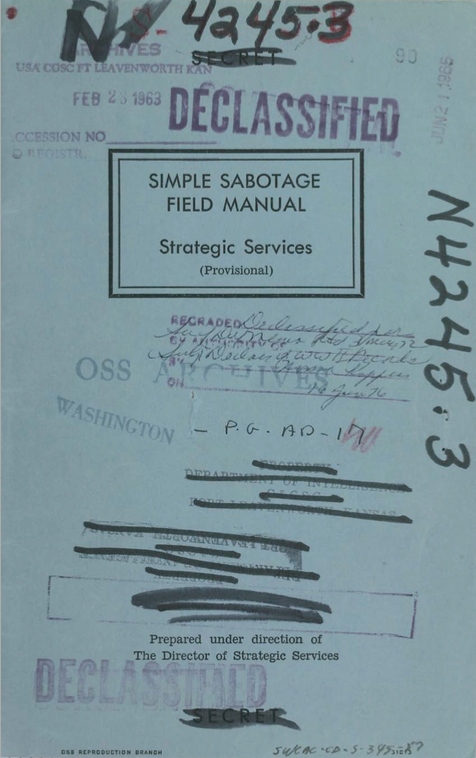
What does a second world war sabotage manual tell us about social work organisations?
In 1944 the allied dropped a secret sabotage manual behind enemy lines to give guidance to citizen saboteurs. This secret manual has been recently republished and contains some surprisingly timeless, up to date insights into modern social work organisations.
It contains a lot of advice about how to sabotage organisations surreptitiously. Unfortunately many of us will recognise times when we have seen this advice put into practice in our local authorities! From committees meetings, to administrative systems, to training and managing staff , this saboteurs guide has something to teach us.
In fact you should use this as a guide for how to not run your organisation. By turning the document on its head it tells you how to move from ineffective bureaucratic systems to something much more effective. And that’s exactly how modern business leaders are using it. How many of these do you recognise?
Extracts from Chapter 11 – General interference with organisations and production
1) When possible, refer all matters to committees, for “further study and consideration.” Attempt to make the committees as large as possible – never less than five.
2) Bring up irrelevant issues as frequently as possible.
3) Haggle over precise wordings of communications, minutes, resolutions.
4)Refer back to matters decided upon at the last meeting and attempt to re-open the question of the advisability of that decision,
5) Advocate “caution.” Be unreasonable” and urge your fellow-conferees to be “reason- able” and avoid haste which might result in embarrassments or difficulties later on.
6) Be worried about the propriety of any decision – raise the question of whether such action as is contemplated lies within the jurisdiction of the group or whether it might conflict with the policy of some higher echelon.
7) Hold conferences when there is more critical work to be done.
8) Demand everything in writing.
9) Misunderstand orders. Ask endless questions or engage in long correspondence about such orders. Quibble over them when you can.
10) Multiply paper work in plausible ways. Start duplicate files. Lose files. Force files to be re-copied.
11) Multiply the procedures and clearances involved in issuing instructions, pay checks, and so on. See that three people have to approve everything where one would do.
12) Do your. work poorly and blame it on bad tools, machinery, or equipment. Complain that these things are preventing you from doing your job right. ‘
13) Never pass on your skill and experience to a new or less skillful worker.
14) Snarl up administration in every possible way. Fill out forms unintelligibly so that theywill have to be done over ; make mistakes or omit requested information in forms.
15) If possible, join or help organise a group for presenting employee problems to the management. See that the procedures adopted are as inconvenient as possible for the management, involving the presence of a large number of employees at each presentation, entailing more than one meeting for each grievance, bringing up problems which are largely imaginary, and so on.
16) Don’t order new working materials until your current stocks have been virtually exhausted, so that the slightest delay in filling your order will mean a shutdown.
17) In making work assignments, always sign out the unimportant jobs first. See that the important jobs are assigned to inefficient workers of poor machines.
18) Insist on perfect work in relatively unimportant products; send back for refinishing those which have the least flaws. Approve other defective parts whose flaws are not visible to the naked eye.
19) When training new workers, give incomplete or misleading instructions.
You can download a pfd of the original document here









Leave a Reply
Your email is safe with us.